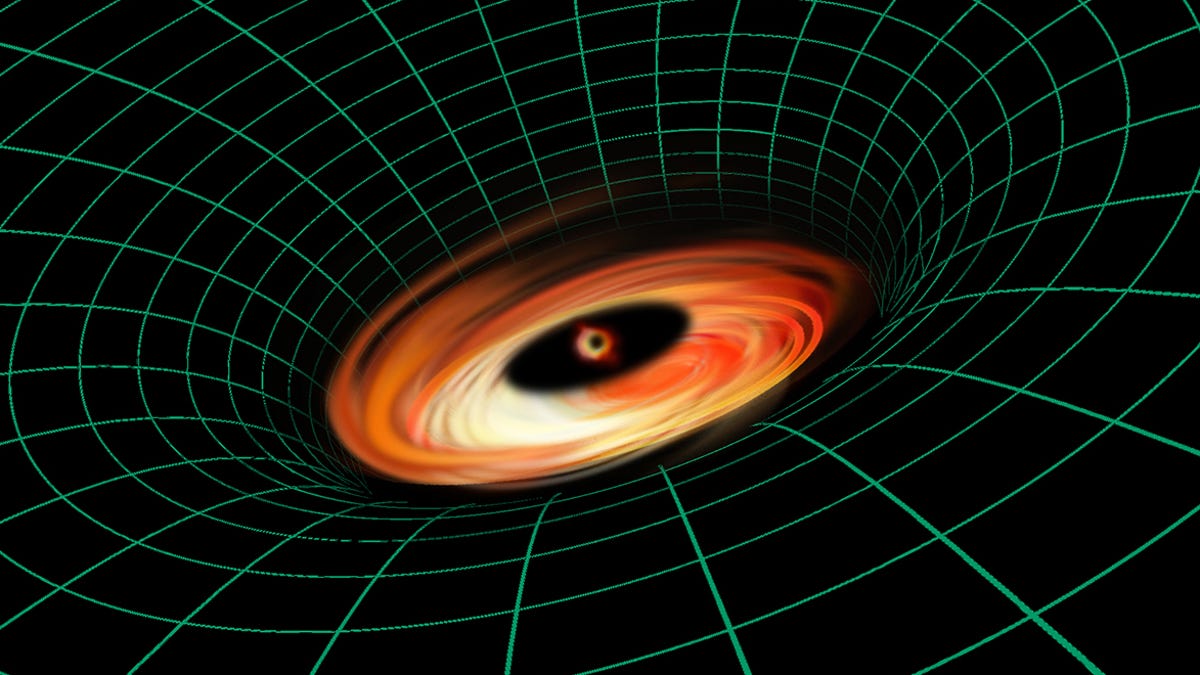NASA telescope detects supermassive black hole that shouldn't exist
130 million light-years away, the Hubble Space Telescope finds a very unusual black hole.

A monster black hole lurks at the center of NGC 3147 with a swirling disk of gas and light that... shouldn't exist.
In the heart of the spiral galaxy NGC 3147 lies a supermassive black hole. That's not usually cause for concern because many galaxies hide supermassive black holes at their center and astronomers spot them doing really weird things all the time! However, this particular black hole, spotted by a team using NASA's Hubble Space Telescope, shouldn't exist. At least, not according to our current theories about the universe.
The mysterious black hole, weighing about 250 million times more than the sun, is detailed in astronomy journal Monthly Notices of the Royal Astronomical Society, in its July 11 publication. It's puzzling astronomers because it is encircled by a thin disk, known as an accretion disk, containing debris and gas rapidly racing around the hole's edge.
That disk shouldn't be there.
The black hole at the center of NGC 3147, about 130 million light-years from Earth, is kind of in a bad way. Not enough material is being captured by its huge gravitational field which means the black hole is "starving." These kind of black holes generally don't form disks of material -- that's reserved for the well-fed cosmic beasts. But this particular black hole does have a disk of material zipping around it at 10% the speed of light (a casual 18,628 miles per second), turning current models on their head.
"It's the same type of disk we see in objects that are 1,000 or even 100,000 times more luminous," said lead author Stefano Bianchi, in a press release. "The predictions of current models for gas dynamics in very faint active galaxies clearly failed."
The stars that call NGC 3147 home make it difficult to see inside the galaxy but using a specialized instrument on the Hubble Space Telescope, the researchers were able to block out the starlight and peer inside to witness matter swirling around the black hole. Spotting the disk gives astronomers a chance to see two of Einstein's theories of relativity in action and understand the processes occurring close to the black hole's edge.
"This is an intriguing peek at a disc very close to a black hole, so close that the velocities and the intensity of the gravitational pull are affecting how we see the photons of light," explains Bianchi.
So this type of black hole shouldn't exist but it does -- making these behemoth, mysterious cosmic phenomena even more intriguing. The researchers intend to look at more galaxies with Hubble in the future, hoping to find similar disks of material.

